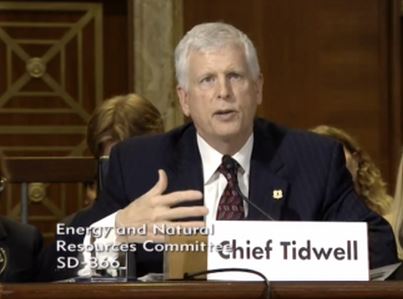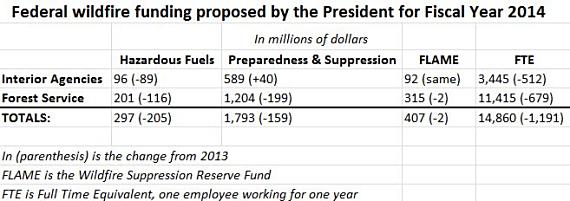
During a visit to the National Interagency Fire Center (NIFC) in Boise, Idaho today, Agriculture Secretary Tom Vilsack and Interior Secretary Sally Jewell (just 34 days into her new job) discussed the state of wildfire preparedness.
Secretary Vilsack said there will be 500 fewer firefighters and 50 fewer engines this year as a result of the budget cuts required by the sequester process adopted by Congress and signed by the President. Vilsack said the overall reduction is more than seven percent.
The Chief of the U.S. Forest Service, Tom Tidwell, testified before a congressional committee April 16, saying:
We will have the resources we need.
Several news organizations reported on today’s visit. The Salt Lake Tribune wrote, in part:
In answering a question about whether firefighters would make it a priority to protect watersheds in Utah, [Secretary] Jewell said the cuts also are reducing what the federal land agencies spend on preventing fires and rehabilitating lands after a fire.
“You can’t do as much as that advance work as you would like or the post-fire remediation to maintain the integrity of those ecosystems,” Jewell said.
The Idaho Statesman:
Idaho Republican Jim Risch, who joined the two cabinet secretaries on the tour praised the firefighting agencies for doing as well as they can with less. But Risch, who voted for the cuts, offered little hope the secretaries will be able to avoid the robbing-Peter-to-pay-Paul tradeoffs they face.
“”We got to accept the fact there is not going to be federal funding like there was before,” Risch said.
But in August, if all of the firefighting resources are already in place and more are needed to meet the threat Risch said he and other western lawmakers will put together a coalition to get the emergency funding that is necessary.
Jewell joined smokejumpers Sunday on a training flight five weeks into her tenure as Interior secretary. She also led the entourage over to the Boise Fire Dispatch outside of NIFC to see how the firefighters from federal, state and local governments work together on the ground.
The press release issued by the DOI and DOA included this passage:
Federal assets include more than 13,000 firefighters, including permanent and seasonal federal employees; more than 1,600 engines; up to 26 multiengine air tankers and two water scooper aircrafts; approximately 27 single engine air tankers; and hundreds of helicopters.
Note the “up to 26 multiengine air tankers”. The reality is, there are eight large air tankers on contract — seven 50+ year-old P2Vs, and one BAe-146. In addition to those, six of the seven “next generation” 3,000+ gallon air tankers that were just notified they would be receiving contracts are months or more away from being certified by the FAA and the Interagency AirTanker Board. Some of them may not be seen dropping on a fire until late this summer or even next year, if they are certified at all. The two scoopers mentioned carry less than 1,500 gallons. In addition, the USFS may again borrow some 2,000-gallon, 50-year old Convair 580s from Canada if they are available and not tied up on fires.
Thanks go out to Kelly







